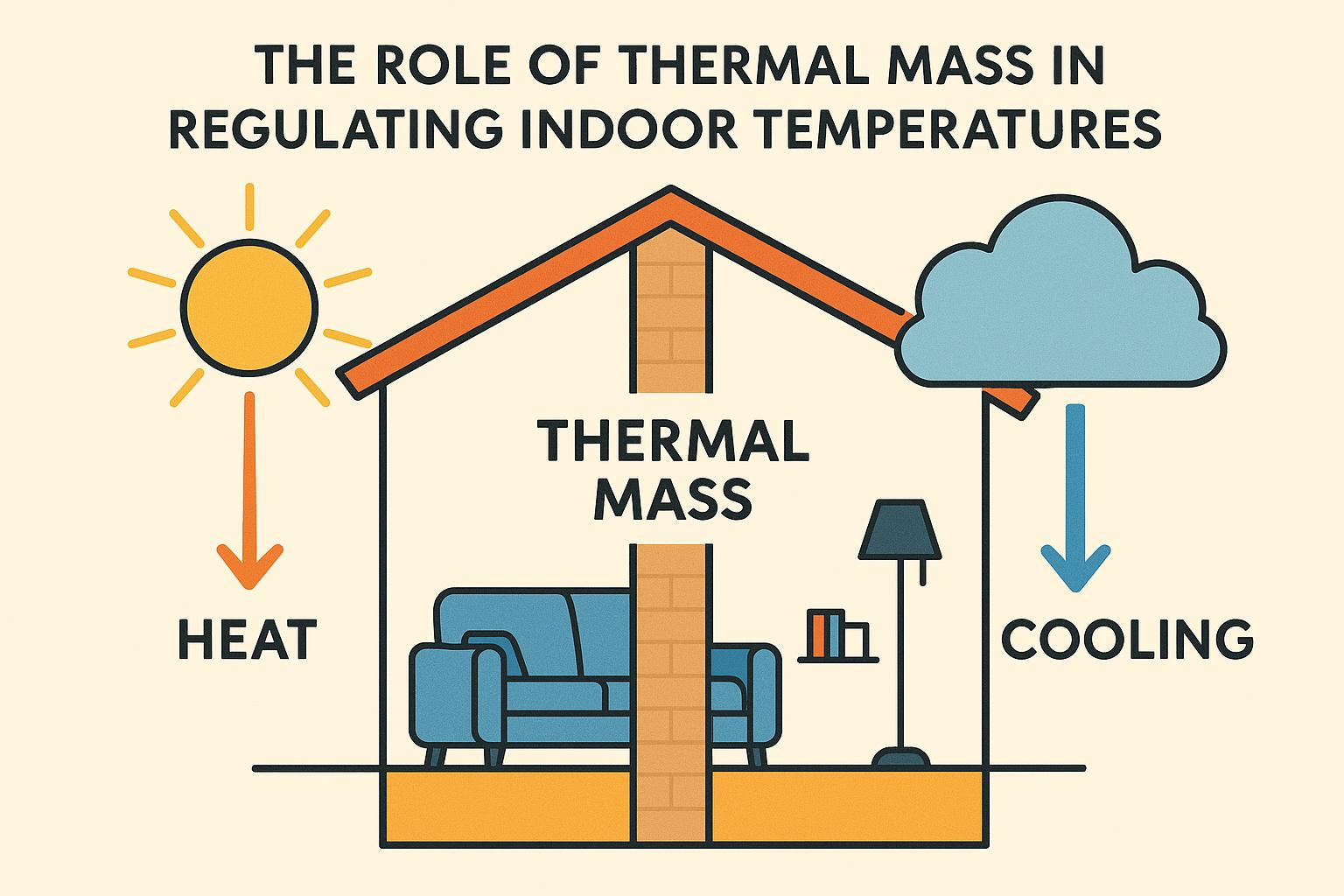The Concept of Thermal Mass
The concept of thermal mass is rooted in the ability of certain materials to absorb, store, and release thermal energy over time. In the sphere of architecture and building design, understanding and applying this principle is paramount for creating spaces that maintain stable thermal conditions. The stabilization of indoor environments through the application of thermal mass can lead to significant reductions in reliance on artificial heating and cooling, ultimately enhancing energy efficiency in buildings.
How Thermal Mass Works
To grasp the function of thermal mass, it is important to understand the basic mechanism of heat transfer. When thermal energy, coming from sources like sun exposure, impacts a surface, materials characterized by high thermal mass absorb a substantial part of this energy. These materials hold onto this heat and gradually release it as the surrounding air temperature falls, thereby contributing to a steadier indoor climate. This gradual energy release can be particularly valuable during nights or in cooler periods when external temperatures drop.
On the flip side, during cooler seasons or in colder climates, thermal mass materials absorb heat from indoor environments. This characteristic helps to even out temperature disparities, preventing the indoor environment from experiencing harsh temperature swings.
Common Materials Used for Thermal Mass
Several materials possess the naturally advantageous properties of thermal mass, making them suitable for use in building designs that prioritize temperature regulation.
Concrete and brick stand out as popular choices in construction, favored not only for their structural benefits but also for their adeptness at storing large quantities of heat. These materials are typically central to the construction of walls and floors, where they not only provide mechanical strength but also facilitate efficient thermal management.
Stone is another material well recognized for its superior thermal mass capabilities. It often finds use in situations where aesthetics are as critical as functionality, such as in the building of stylish facades or decorative interiors that demand both durability and a natural look.
Water, while not commonly employed as a primary building material, boasts a high specific heat capacity, indicating its proficiency in storing thermal energy. This feature renders it advantageous in specific applications where passive heat regulation is desired, such as in thermal storage tanks.
Benefits of Incorporating Thermal Mass
Incorporating thermal mass into building designs yields numerous benefits. By reducing temperature fluctuation extremes, it enhances occupant comfort, creating more livable spaces with stable temperatures. The consistent indoor environment not only improves comfort levels but also leads to energy savings. By lessening dependence on mechanical heating and cooling systems, thermal mass contributes to the reduction of energy consumption, thereby promoting a more sustainable use of resources.
Additionally, buildings that incorporate thermal mass strategies effectively contribute to environmental sustainability. By lowering the overall carbon footprint associated with energy usage, they support broader goals of environmental responsibility. Further insights into sustainable design practices can be found at this resource.
Optimizing Thermal Mass in Building Design
For thermal mass to deliver optimum benefits, several design considerations must be taken into account. The building’s orientation, particularly in relation to the sun’s path, plays a pivotal role in maximizing thermal mass efficiency. Strategic positioning allows the materials to absorb maximum sunlight during colder months when warmth is needed. Conversely, shading devices such as overhangs can mitigate excessive heat absorption during warmer months, preventing overheating.
Window placement and design also require careful planning. Energy-efficient windows, particularly those with low-emissivity coatings, can help regulate heat ingress and egress, working in tandem with thermal mass to enhance overall thermal stability.
Moreover, optimized designs also ensure that walls, ceilings, and other structural components are well-insulated. Effective insulation helps in minimizing unwanted heat loss, complementing the function of thermal mass by conserving the energy stored within, thus bolstering the building’s energy efficiency.
The Balance Between Thermal Mass and Insulation
Achieving a harmonious balance between thermal mass and insulation is a key aspect of designing efficient thermal environments. Insulation primarily serves the purpose of slowing down heat transfer, providing a barrier that helps maintain desired temperatures within a building’s interior.
A building that is well insulated can minimize heat exchange with the exterior, allowing the thermal mass to regulate indoor conditions more effectively. Successfully striking the right equilibrium ensures maximized comfort levels and energy efficiency, as each element supports the functional role of the other within the building’s thermal envelope.
In conclusion, leveraging the properties of thermal mass in building design offers a compelling strategy for maintaining indoor temperatures and enhancing energy efficiency. Through diligent planning and the selection of suitable materials, thermal mass can contribute significantly to the sustainability, comfort, and cost-effectiveness of built environments. The thoughtful integration of thermal mass elements within the architectural fabric of a building is instrumental in adapting to varying climate conditions while prioritizing sustainable practices.



